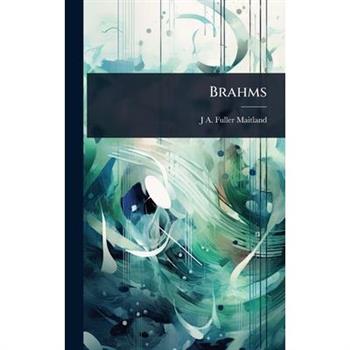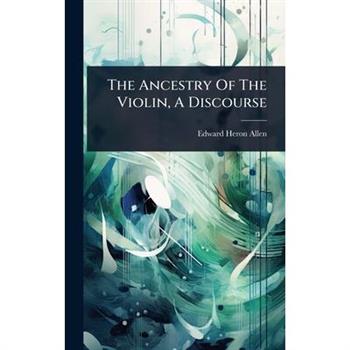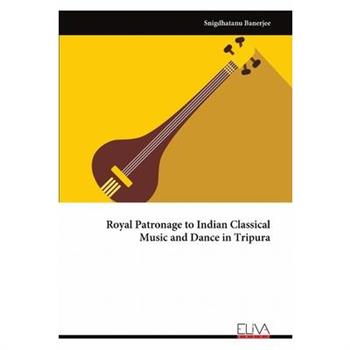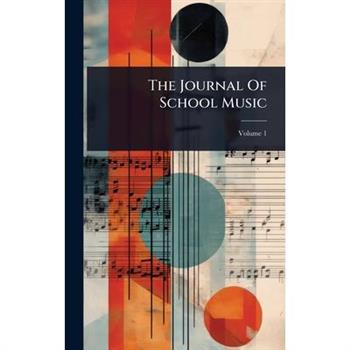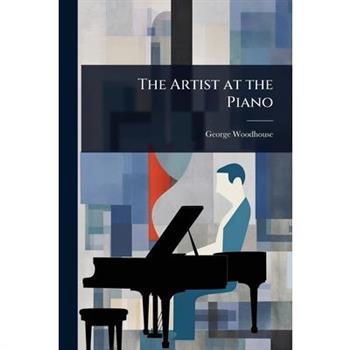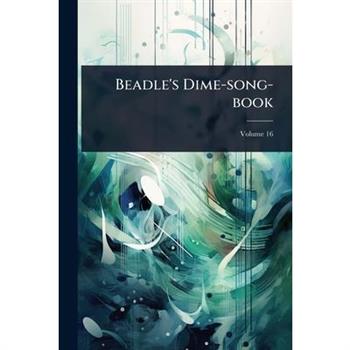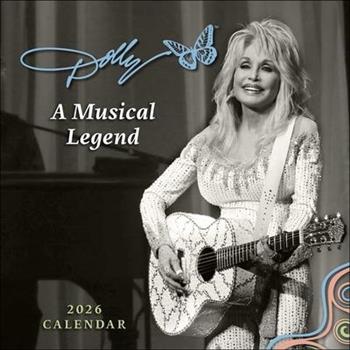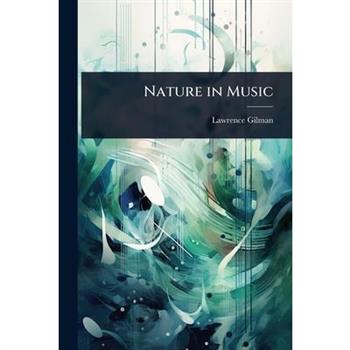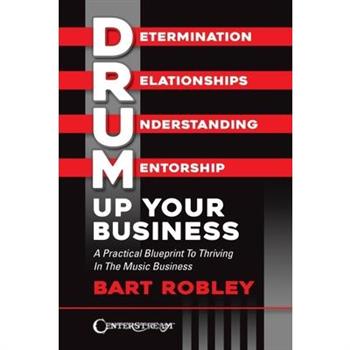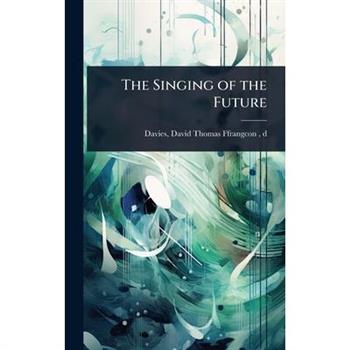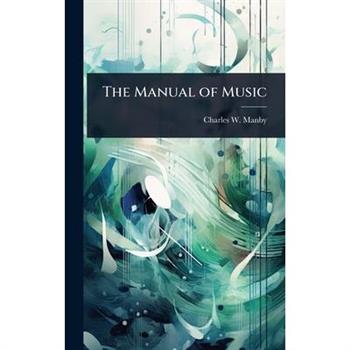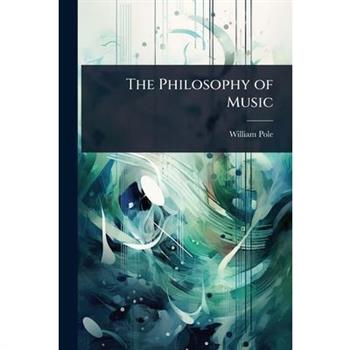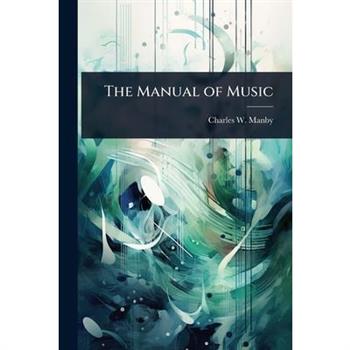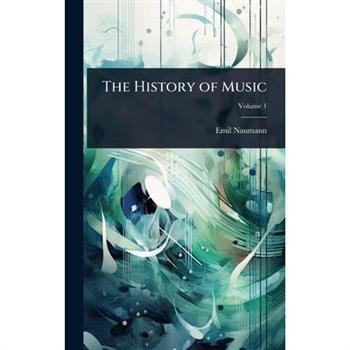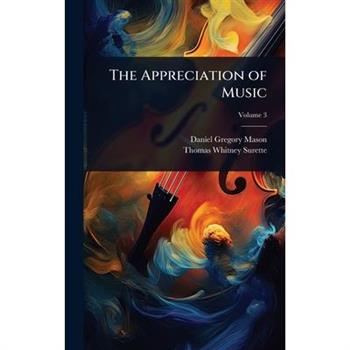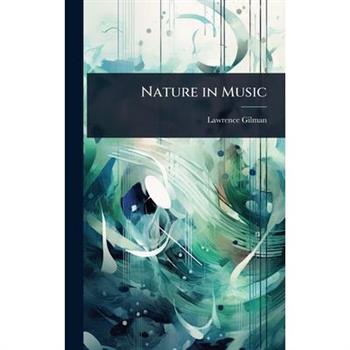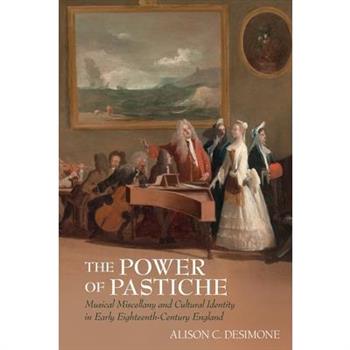The First Book of Songs Or Airs of Four Parts
This is Volume 20 of a series that presents the complete works of Elizabethan composer Francis Pilkington. This volume contains 璽€œThe First Book of Songs or Airs of Four Parts, 璽€ originally published in 1605. Pilkington (c. 1570 璽€" 1638) was an English composer, lutenist, and singer who served as a Lay Vicar at Chester Cathedral. His compositions are representative of the English madrigal school and lute song traditions. This collection offers valuable insight into the musical tastes and practices of the early 17th century, and is a significant resource for scholars and performers interested in Renaissance and early Baroque music.This work has been selected by scholars as being culturally important, and is part of the knowledge base of civilization as we know it. This work was reproduced from the original artifact, and remains as true to the original work as possible. Therefore, you will see the original copyright references, library stamps (as most of these works have been housed in our most important libraries around the world), and other notations in the work.This work is in the public domain in the United States of America, and possibly other nations. Within the United States, you may freely copy and distribute this work, as no entity (individual or corporate) has a copyright on the body of the work.As a reproduction of a historical artifact, this work may contain missing or blurred pages, poor pictures, errant marks, etc. Scholars believe, and we concur, that this work is important enough to be preserved, reproduced, and made generally available to the public. We appreciate your support of the preservation process, and thank you for being an important part of keeping this knowledge alive and relevant.
Wagnerism
"Wagnerism: A Protest" by Henry William Lovett Hime, originally published in 1882, offers a fascinating glimpse into the early debates surrounding the music and cultural phenomenon of Richard Wagner. This critical work captures the dissenting voices of the time, providing valuable insight into the controversies and fervent discussions sparked by Wagner's operas and aesthetic theories. Hime璽€(TM)s protest serves as a historical document, reflecting the intellectual and artistic climate of the late 19th century and the profound impact Wagner had on European thought. For scholars of music history, literary criticism, and cultural studies, "Wagnerism" provides a rich resource for understanding the complex legacy of one of music's most influential figures.This work has been selected by scholars as being culturally important, and is part of the knowledge base of civilization as we know it. This work was reproduced from the original artifact, and remains as true to the original work as possible. Therefore, you will see the original copyright references, library stamps (as most of these works have been housed in our most important libraries around the world), and other notations in the work.This work is in the public domain in the United States of America, and possibly other nations. Within the United States, you may freely copy and distribute this work, as no entity (individual or corporate) has a copyright on the body of the work.As a reproduction of a historical artifact, this work may contain missing or blurred pages, poor pictures, errant marks, etc. Scholars believe, and we concur, that this work is important enough to be preserved, reproduced, and made generally available to the public. We appreciate your support of the preservation process, and thank you for being an important part of keeping this knowledge alive and relevant.
Conceptos Corales
Author: 竅+ Duane S. Crowther Description: Conceptos Corales is a goldmine of valuable information for choir directors and members of choral organizations. It draws from the resources of the author's Teaching Choral Concepts curriculum which has been used with great success by many high schools and university groups across the nation. The book includes basic principles for more than thirty essential aspects of choral singing, presenting them in a concise format that can be easily understood. Product Details: Format: Paperback Print: Black & White Size: 6x9 Page Count: 134 ISBN: 9780882907536 Imprint: 竅+CFI Books Office Use: 2M13K
Grammar School Songs
"Grammar School Songs: A Collection of Songs for Fun and Fancy," compiled by Charles Hubert Farnsworth, is a delightful treasury of musical pieces intended for use in grammar schools. Published in 1917, this collection reflects the pedagogical approaches of the time, emphasizing the role of music in the moral and intellectual development of young students. The songbook includes a variety of compositions designed to appeal to different tastes and age groups within the grammar school setting. From patriotic anthems to playful tunes, each song is selected to engage students in both singing and learning. Farnsworth璽€(TM)s careful curation ensures that the songs are not only entertaining but also educational, fostering a sense of community and shared experience among the pupils. This enduring collection provides a window into the past, offering valuable insights into the cultural and educational values of early 20th-century America. "Grammar School Songs" remains a charming and historically significant resource for educators, historians, and anyone interested in the evolution of music education.This work has been selected by scholars as being culturally important, and is part of the knowledge base of civilization as we know it. This work was reproduced from the original artifact, and remains as true to the original work as possible. Therefore, you will see the original copyright references, library stamps (as most of these works have been housed in our most important libraries around the world), and other notations in the work.This work is in the public domain in the United States of America, and possibly other nations. Within the United States, you may freely copy and distribute this work, as no entity (individual or corporate) has a copyright on the body of the work.As a reproduction of a historical artifact, this work may contain missing or blurred pages, poor pictures, errant marks, etc. Scholars believe, and we concur, that this work is important enough to be preserved, reproduced, and made generally available to the public. We appreciate your support of the preservation process, and thank you for being an important part of keeping this knowledge alive and relevant.
Songs of Inspiration
Author: 竅+ Gerald Lund Description A superb collection of artistic piano arrangements, Songs of Inspiration will bring joy and contemplation to any worship service. These beautiful and well-loved hymns are perfect for piano or organ preludes or postludes for any religious gathering and can also be used as accompaniments for soloists or church choirs. Some of the pieces included are: Each Life that Touches Ours for GoodOur Savior s LoveLord, I Would Follow TheeFamilies Can Be Together ForeverThe Light DivineAs Sisters in Zion, and moreThese simple arrangements require medium-level performance abilities and can be played by most church organists or piano accompanists. Songs of Inspiration is an invaluable addition to any accompanist's repertoire. Product Details: ISBN: 9780882902760 Imprint: CFI Books Publishing Office Use:
Frederic Chopin
Explore the life and legacy of one of history璽€(TM)s most celebrated composers with "Frederic Chopin, His Life and Letters, Volume 2" by Maurycy Karasowski. This meticulously researched biography delves into Chopin's personal experiences, artistic development, and enduring impact on classical music. Through a collection of intimate letters and detailed accounts, readers gain a unique insight into the world of the Romantic era and the profound emotions that shaped Chopin璽€(TM)s compositions. Karasowski璽€(TM)s work offers a comprehensive look at Chopin's career, from his early influences to his rise to international fame. Discover the stories behind his iconic pieces and the relationships that influenced his musical genius. This volume provides invaluable context for understanding Chopin's contributions to the world of music, making it an essential read for scholars, musicians, and anyone with a passion for classical music and historical biography.This work has been selected by scholars as being culturally important, and is part of the knowledge base of civilization as we know it. This work was reproduced from the original artifact, and remains as true to the original work as possible. Therefore, you will see the original copyright references, library stamps (as most of these works have been housed in our most important libraries around the world), and other notations in the work.This work is in the public domain in the United States of America, and possibly other nations. Within the United States, you may freely copy and distribute this work, as no entity (individual or corporate) has a copyright on the body of the work.As a reproduction of a historical artifact, this work may contain missing or blurred pages, poor pictures, errant marks, etc. Scholars believe, and we concur, that this work is important enough to be preserved, reproduced, and made generally available to the public. We appreciate your support of the preservation process, and thank you for being an important part of keeping this knowledge alive and relevant.
Ferdinand Franck
璽€œFerdinand Franck: An Auto-Biographical Sketch of the Youthful Days of a Musical Student璽€ offers a rare glimpse into the formative years of a young musician in the early 19th century. This autobiographical work details Franck's experiences, challenges, and triumphs as he navigates the world of musical study and development. Readers gain insight into the dedication and passion required to pursue a life in music during this era. Franck's narrative provides a historical perspective on musical education and the cultural landscape that shaped aspiring musicians. This volume is valuable for those interested in music history, biographical studies, and the lives of artists who have contributed to the rich tapestry of classical music.This work has been selected by scholars as being culturally important, and is part of the knowledge base of civilization as we know it. This work was reproduced from the original artifact, and remains as true to the original work as possible. Therefore, you will see the original copyright references, library stamps (as most of these works have been housed in our most important libraries around the world), and other notations in the work.This work is in the public domain in the United States of America, and possibly other nations. Within the United States, you may freely copy and distribute this work, as no entity (individual or corporate) has a copyright on the body of the work.As a reproduction of a historical artifact, this work may contain missing or blurred pages, poor pictures, errant marks, etc. Scholars believe, and we concur, that this work is important enough to be preserved, reproduced, and made generally available to the public. We appreciate your support of the preservation process, and thank you for being an important part of keeping this knowledge alive and relevant.
The Foundations of Musical ?†sthetics; or, The Elements of Music
The Foundations of Musical ?†sthetics; or, The Elements of Music by John B. McEwen, originally published in 1917, offers a comprehensive exploration of the principles underlying musical beauty and structure. This seminal work delves into the fundamental elements of music, providing a deep understanding of its aesthetic qualities. McEwen璽€(TM)s insightful analysis covers a range of topics, including harmony, melody, rhythm, and form, elucidating how these elements contribute to the overall artistic experience.Designed for students, musicians, and scholars alike, "The Foundations of Musical ?†sthetics" presents a detailed examination of the theoretical underpinnings of music. McEwen璽€(TM)s work remains a valuable resource for anyone seeking to deepen their appreciation and understanding of musical art. This edition preserves the original text, ensuring that readers can engage with McEwen璽€(TM)s ideas as they were initially presented.This work has been selected by scholars as being culturally important, and is part of the knowledge base of civilization as we know it. This work was reproduced from the original artifact, and remains as true to the original work as possible. Therefore, you will see the original copyright references, library stamps (as most of these works have been housed in our most important libraries around the world), and other notations in the work.This work is in the public domain in the United States of America, and possibly other nations. Within the United States, you may freely copy and distribute this work, as no entity (individual or corporate) has a copyright on the body of the work.As a reproduction of a historical artifact, this work may contain missing or blurred pages, poor pictures, errant marks, etc. Scholars believe, and we concur, that this work is important enough to be preserved, reproduced, and made generally available to the public. We appreciate your support of the preservation process, and thank you for being an important part of keeping this knowledge alive and relevant.
Handbook of Acoustics for the use of Musical Students
"Handbook of Acoustics for the use of Musical Students" by Thomas Frederick Harris, originally published in 1887, offers a detailed exploration into the science of sound and its relationship to music. This comprehensive guide delves into the principles of acoustics, providing musical students with a foundational understanding of how sound is produced, transmitted, and perceived. The book covers a range of topics, including the physical properties of sound waves, the acoustics of musical instruments, and the principles of harmony and resonance. Harris's handbook is designed to bridge the gap between scientific knowledge and musical practice, offering clear explanations and practical examples. This book remains a valuable resource for anyone seeking a deeper understanding of the interplay between acoustics and music.This work has been selected by scholars as being culturally important, and is part of the knowledge base of civilization as we know it. This work was reproduced from the original artifact, and remains as true to the original work as possible. Therefore, you will see the original copyright references, library stamps (as most of these works have been housed in our most important libraries around the world), and other notations in the work.This work is in the public domain in the United States of America, and possibly other nations. Within the United States, you may freely copy and distribute this work, as no entity (individual or corporate) has a copyright on the body of the work.As a reproduction of a historical artifact, this work may contain missing or blurred pages, poor pictures, errant marks, etc. Scholars believe, and we concur, that this work is important enough to be preserved, reproduced, and made generally available to the public. We appreciate your support of the preservation process, and thank you for being an important part of keeping this knowledge alive and relevant.
The Foundations of Musical ?†sthetics; or, The Elements of Music
The Foundations of Musical ?†sthetics; or, The Elements of Music by John B. McEwen, originally published in 1917, offers a comprehensive exploration of the principles underlying musical beauty and structure. This seminal work delves into the fundamental elements of music, providing a deep understanding of its aesthetic qualities. McEwen璽€(TM)s insightful analysis covers a range of topics, including harmony, melody, rhythm, and form, elucidating how these elements contribute to the overall artistic experience.Designed for students, musicians, and scholars alike, "The Foundations of Musical ?†sthetics" presents a detailed examination of the theoretical underpinnings of music. McEwen璽€(TM)s work remains a valuable resource for anyone seeking to deepen their appreciation and understanding of musical art. This edition preserves the original text, ensuring that readers can engage with McEwen璽€(TM)s ideas as they were initially presented.This work has been selected by scholars as being culturally important, and is part of the knowledge base of civilization as we know it. This work was reproduced from the original artifact, and remains as true to the original work as possible. Therefore, you will see the original copyright references, library stamps (as most of these works have been housed in our most important libraries around the world), and other notations in the work.This work is in the public domain in the United States of America, and possibly other nations. Within the United States, you may freely copy and distribute this work, as no entity (individual or corporate) has a copyright on the body of the work.As a reproduction of a historical artifact, this work may contain missing or blurred pages, poor pictures, errant marks, etc. Scholars believe, and we concur, that this work is important enough to be preserved, reproduced, and made generally available to the public. We appreciate your support of the preservation process, and thank you for being an important part of keeping this knowledge alive and relevant.
Report of the Fourth Congress of the International Musical Society. London, 29th May-3rd June, 1911
This volume presents the official report of the Fourth Congress of the International Musical Society, held in London from May 29th to June 3rd, 1911. It offers a detailed record of the proceedings, papers, and discussions that took place during this significant event in the history of musicology. Providing insights into the musical thought and scholarship of the early 20th century, the "Report of the Fourth Congress of the International Musical Society" serves as a valuable resource for music historians, researchers, and anyone interested in the evolution of musical studies. It showcases the international collaboration and exchange of ideas that characterized the field during this period, making it an enduring testament to the ongoing pursuit of musical knowledge and understanding.This work has been selected by scholars as being culturally important, and is part of the knowledge base of civilization as we know it. This work was reproduced from the original artifact, and remains as true to the original work as possible. Therefore, you will see the original copyright references, library stamps (as most of these works have been housed in our most important libraries around the world), and other notations in the work.This work is in the public domain in the United States of America, and possibly other nations. Within the United States, you may freely copy and distribute this work, as no entity (individual or corporate) has a copyright on the body of the work.As a reproduction of a historical artifact, this work may contain missing or blurred pages, poor pictures, errant marks, etc. Scholars believe, and we concur, that this work is important enough to be preserved, reproduced, and made generally available to the public. We appreciate your support of the preservation process, and thank you for being an important part of keeping this knowledge alive and relevant.
Creak
This book explores what pulse phonation is, what it can do, and how it develops into a cultural practice. It is a multidisciplinary inquiry that merges theoretical frameworks with embodied practice to discuss the processes of producing and perceiving pulse phonation, its use and significance in contemporary discourse, its functions in the animal world, and its place in a broader reflection on voice and sound production. It presents a thorough investigation of pulse phonation to jointly take into consideration its sociocultural, bioacoustic, and creative dimensions. In the book, leading scholars and practitioners such as Nassima Abdelli-Beruh, Diana Sidtis, Katherine Meizel, and John Nix present a wide array of approaches, from sociolinguistics and voice anatomy to acoustic ecology and performance studies. These approaches include case studies of creaky voices across cultures and media; physiology and acoustics of the pulse register; creak singing including possibilities, perspectives, pedagogies; pulse phonation, embodiment, and gender; the "phenomenon of extreme vocal fry"; vocology, somatics, and the disease condition; the use of pulse phonation from live arts to film studies; composition, improvisation, and creation with creak; and the pulse register in animal vocalization. This groundbreaking publication concludes with a multifaceted series of testimonies from users and listeners of creaky voices.
The Quarterly Musical Magazine And Review [ed. By R.m. Bacon]
Dive into the rich tapestry of 19th-century musical thought with 璽€œThe Quarterly Musical Magazine And Review, 璽€ edited by R.M. Bacon. This periodical offers a fascinating glimpse into the musical landscape of its time, featuring insightful criticism, scholarly articles, and reviews of contemporary compositions and performances. Explore the evolving tastes and trends that shaped the musical world, as reflected in the perspectives of the era's leading musicians and critics. Whether you are a music historian, a student of classical music, or simply a lover of the art form, this magazine provides invaluable primary source material and a deeper understanding of the musical debates and innovations that defined a generation. Rediscover the voices of the past and their enduring impact on the music we cherish today.This work has been selected by scholars as being culturally important, and is part of the knowledge base of civilization as we know it. This work was reproduced from the original artifact, and remains as true to the original work as possible. Therefore, you will see the original copyright references, library stamps (as most of these works have been housed in our most important libraries around the world), and other notations in the work.This work is in the public domain in the United States of America, and possibly other nations. Within the United States, you may freely copy and distribute this work, as no entity (individual or corporate) has a copyright on the body of the work.As a reproduction of a historical artifact, this work may contain missing or blurred pages, poor pictures, errant marks, etc. Scholars believe, and we concur, that this work is important enough to be preserved, reproduced, and made generally available to the public. We appreciate your support of the preservation process, and thank you for being an important part of keeping this knowledge alive and relevant.
Brahms
Explore the life and work of Johannes Brahms in this insightful biography by J. A. Fuller-Maitland. Delve into the details of Brahms's musical development, his influences, and his enduring impact on classical music. Fuller-Maitland offers a critical yet appreciative examination of Brahms's compositions, shedding light on the complexities and nuances of his art.Brahms provides a valuable resource for music enthusiasts, scholars, and anyone interested in the life and legacy of one of the most important composers of the 19th century. Discover the man behind the music and gain a deeper understanding of his contributions to the world of classical music.This work has been selected by scholars as being culturally important, and is part of the knowledge base of civilization as we know it. This work was reproduced from the original artifact, and remains as true to the original work as possible. Therefore, you will see the original copyright references, library stamps (as most of these works have been housed in our most important libraries around the world), and other notations in the work.This work is in the public domain in the United States of America, and possibly other nations. Within the United States, you may freely copy and distribute this work, as no entity (individual or corporate) has a copyright on the body of the work.As a reproduction of a historical artifact, this work may contain missing or blurred pages, poor pictures, errant marks, etc. Scholars believe, and we concur, that this work is important enough to be preserved, reproduced, and made generally available to the public. We appreciate your support of the preservation process, and thank you for being an important part of keeping this knowledge alive and relevant.
Second Music Reader
"Second Music Reader: A Course Of Exercises In The Elements Of Vocal Music And Sight-singing" by Luther Whiting Mason offers a comprehensive introduction to the fundamentals of vocal music and sight-singing. Designed for both school and family use, this volume provides a structured course of exercises aimed at developing essential musical skills. The book features a selection of carefully chosen rote songs, enabling students to learn and appreciate music through repetition and practice. This method is particularly effective for beginners, fostering a love for singing and laying a solid foundation for more advanced musical studies. "Second Music Reader" is an invaluable resource for educators and families seeking to cultivate musical literacy and appreciation in young learners.This work has been selected by scholars as being culturally important, and is part of the knowledge base of civilization as we know it. This work was reproduced from the original artifact, and remains as true to the original work as possible. Therefore, you will see the original copyright references, library stamps (as most of these works have been housed in our most important libraries around the world), and other notations in the work.This work is in the public domain in the United States of America, and possibly other nations. Within the United States, you may freely copy and distribute this work, as no entity (individual or corporate) has a copyright on the body of the work.As a reproduction of a historical artifact, this work may contain missing or blurred pages, poor pictures, errant marks, etc. Scholars believe, and we concur, that this work is important enough to be preserved, reproduced, and made generally available to the public. We appreciate your support of the preservation process, and thank you for being an important part of keeping this knowledge alive and relevant.
The Ancestry Of The Violin, A Discourse
璽€œThe Ancestry Of The Violin, A Discourse璽€ delves into the fascinating history and evolution of one of the world's most beloved musical instruments. Edward Heron-Allen meticulously traces the lineage of the violin, exploring its potential ancestors and the various influences that shaped its development. From its earliest iterations to its modern form, this discourse offers a comprehensive look at the violin's journey through time. Readers will gain insights into the instrument's construction, its role in different cultures, and the artistry involved in its creation. This book is essential for musicians, historians, and anyone captivated by the rich heritage of stringed instruments. Discover the intricate story behind the violin and appreciate its enduring legacy. This work has been selected by scholars as being culturally important, and is part of the knowledge base of civilization as we know it. This work was reproduced from the original artifact, and remains as true to the original work as possible. Therefore, you will see the original copyright references, library stamps (as most of these works have been housed in our most important libraries around the world), and other notations in the work.This work is in the public domain in the United States of America, and possibly other nations. Within the United States, you may freely copy and distribute this work, as no entity (individual or corporate) has a copyright on the body of the work.As a reproduction of a historical artifact, this work may contain missing or blurred pages, poor pictures, errant marks, etc. Scholars believe, and we concur, that this work is important enough to be preserved, reproduced, and made generally available to the public. We appreciate your support of the preservation process, and thank you for being an important part of keeping this knowledge alive and relevant.
Catalogue Des Livres De Musique Qui Se Vendent Chez Jean Michel G繹tz
This is a catalog of music books sold by Jean Michel G繹tz. A valuable resource for music historians and collectors, the "Catalogue Des Livres De Musique Qui Se Vendent Chez Jean Michel G繹tz" offers a glimpse into the musical tastes and publications available in the 18th century. Compiled by Johann Michael G繹tz, this catalog provides a detailed listing of musical scores, treatises, and other related works. Its enduring appeal lies in its historical significance, shedding light on the musical landscape of a bygone era.This work has been selected by scholars as being culturally important, and is part of the knowledge base of civilization as we know it. This work was reproduced from the original artifact, and remains as true to the original work as possible. Therefore, you will see the original copyright references, library stamps (as most of these works have been housed in our most important libraries around the world), and other notations in the work.This work is in the public domain in the United States of America, and possibly other nations. Within the United States, you may freely copy and distribute this work, as no entity (individual or corporate) has a copyright on the body of the work.As a reproduction of a historical artifact, this work may contain missing or blurred pages, poor pictures, errant marks, etc. Scholars believe, and we concur, that this work is important enough to be preserved, reproduced, and made generally available to the public. We appreciate your support of the preservation process, and thank you for being an important part of keeping this knowledge alive and relevant.
Royal Patronage to Indian Classical Music and Dance in Tripura
The research Royal Patronage to Indian Classical Music and Dance in Tripura deals with the taste and interest of the kings of Tripura to Indian Classical Music and Dance as well as the royal patronisation of the same. The monarchs of Tripura ruled over for several centuries. It took many years for the Tripuri (inhabitant of Tripura) chieftains to uplift themselves as powerful kings. Information of the Court Musicians and the Gharana Maestros during the reigns of different Kings, magnanimity of the kings for the spread of cultural development of the present Tripura will get available in this book.
The Roxburghe Ballads
This is Volume 3 of 璽€œThe Roxburghe Ballads, 璽€ a collection of popular ballads, songs, and verse from the 17th century. Compiled and edited by William Chappell and the Ballad Society, these volumes offer a fascinating glimpse into the musical and literary tastes of the time. The ballads cover a wide range of topics, from love and romance to historical events and social commentary. They provide valuable insight into the lives and concerns of ordinary people during a pivotal period in English history. Students of music history, literature, and social history will find this collection a treasure trove of information. Discover the enduring appeal of these timeless songs and poems, preserved for generations to come. This work has been selected by scholars as being culturally important, and is part of the knowledge base of civilization as we know it. This work was reproduced from the original artifact, and remains as true to the original work as possible. Therefore, you will see the original copyright references, library stamps (as most of these works have been housed in our most important libraries around the world), and other notations in the work.This work is in the public domain in the United States of America, and possibly other nations. Within the United States, you may freely copy and distribute this work, as no entity (individual or corporate) has a copyright on the body of the work.As a reproduction of a historical artifact, this work may contain missing or blurred pages, poor pictures, errant marks, etc. Scholars believe, and we concur, that this work is important enough to be preserved, reproduced, and made generally available to the public. We appreciate your support of the preservation process, and thank you for being an important part of keeping this knowledge alive and relevant.
The Violinist, Volumes 26-27
Explore the world of 19th-century music and the violin with "The Violinist, Volumes 26-27". This compilation offers insights into the instrument's rich history and performance practices of the era. Though authored anonymously, the text provides valuable information on stringed instruments and the lives of violinists during this vibrant period of musical innovation.This work has been selected by scholars as being culturally important, and is part of the knowledge base of civilization as we know it. This work was reproduced from the original artifact, and remains as true to the original work as possible. Therefore, you will see the original copyright references, library stamps (as most of these works have been housed in our most important libraries around the world), and other notations in the work.This work is in the public domain in the United States of America, and possibly other nations. Within the United States, you may freely copy and distribute this work, as no entity (individual or corporate) has a copyright on the body of the work.As a reproduction of a historical artifact, this work may contain missing or blurred pages, poor pictures, errant marks, etc. Scholars believe, and we concur, that this work is important enough to be preserved, reproduced, and made generally available to the public. We appreciate your support of the preservation process, and thank you for being an important part of keeping this knowledge alive and relevant.
The Journal Of School Music
The Journal Of School Music, Volume 1, is a valuable resource for educators and students alike. This independent publication is devoted to school music in all its phases, offering insights into vocal instruction, music theory, and general music education. This volume provides a snapshot of the pedagogical approaches and musical repertoire popular in schools during its time. A must-read for anyone interested in the history of music education or seeking inspiration for contemporary music programs.This work has been selected by scholars as being culturally important, and is part of the knowledge base of civilization as we know it. This work was reproduced from the original artifact, and remains as true to the original work as possible. Therefore, you will see the original copyright references, library stamps (as most of these works have been housed in our most important libraries around the world), and other notations in the work.This work is in the public domain in the United States of America, and possibly other nations. Within the United States, you may freely copy and distribute this work, as no entity (individual or corporate) has a copyright on the body of the work.As a reproduction of a historical artifact, this work may contain missing or blurred pages, poor pictures, errant marks, etc. Scholars believe, and we concur, that this work is important enough to be preserved, reproduced, and made generally available to the public. We appreciate your support of the preservation process, and thank you for being an important part of keeping this knowledge alive and relevant.
The Standard Symphonies
The Standard Symphonies offers a comprehensive exploration of the history, music, and composers behind some of the most enduring symphonic works. George Putnam Upton delves into the origins and evolution of the symphony, providing insightful analyses of landmark compositions from the classical and romantic periods. This volume serves as an invaluable guide for music lovers, students, and anyone seeking a deeper understanding of the symphonic form. From Haydn and Mozart to Beethoven and Brahms, Upton illuminates the unique contributions of each composer, highlighting their innovative approaches to orchestration, melody, and harmony. This book remains a timeless resource for appreciating the richness and complexity of symphonic music. This work has been selected by scholars as being culturally important, and is part of the knowledge base of civilization as we know it. This work was reproduced from the original artifact, and remains as true to the original work as possible. Therefore, you will see the original copyright references, library stamps (as most of these works have been housed in our most important libraries around the world), and other notations in the work.This work is in the public domain in the United States of America, and possibly other nations. Within the United States, you may freely copy and distribute this work, as no entity (individual or corporate) has a copyright on the body of the work.As a reproduction of a historical artifact, this work may contain missing or blurred pages, poor pictures, errant marks, etc. Scholars believe, and we concur, that this work is important enough to be preserved, reproduced, and made generally available to the public. We appreciate your support of the preservation process, and thank you for being an important part of keeping this knowledge alive and relevant.
The Military Band
La Musique Militaire (1917) is one of the first comprehensive histories of military music in Europe, written by Marie Bobillier under the pseudonym Michel Brenet. At a time when scholarly music writing was dominated by men, Bobillier-an accomplished historian and musicologist-brought intellectual rigour and a unique perspective to this neglected topic.The book traces the development of military bands from ancient times through the 19th century, with a particular focus on France. It explores how military music evolved in tandem with changes in warfare, politics, and instrument-making. From the fifes and drums of the Renaissance to the wind orchestras of the Napoleonic era and beyond, Bobillier examines the aesthetic, ceremonial, and practical functions of music in the armed forces. She discusses composers, bandmasters, instrument makers (notably Adolphe Sax), and the military institutions that shaped this repertoire.What sets this book apart is its blend of technical knowledge, cultural insight, and archival research. Bobillier presents military music not merely as an accompaniment to battle, but as a living art form that reflects national identity, civic pride, and artistic ambition. The work also preserves a vivid memory of France's military bands before their modern standardisation, making it a crucial source for historians, conductors, and instrument scholars alike.This English translation brings Bobillier's ground-breaking study to a wider audience for the first time. With annotations to clarify historical references and context, the edition restores her voice to the history of military music-a field she helped to define but in which she was long overlooked.
The Artist at the Piano
璽€œThe Artist at the Piano璽€ delves into the intricate relationship between artistic expression and musical performance. Through insightful analysis and vivid examples, George Woodhouse explores the dedication required to master the piano and achieve true artistic interpretation. This book is essential reading for pianists of all levels, from aspiring students to seasoned performers, offering valuable insights into the art of musical expression. A compelling exploration of the dedication and passion that defines the artist at the piano. This work has been selected by scholars as being culturally important, and is part of the knowledge base of civilization as we know it. This work was reproduced from the original artifact, and remains as true to the original work as possible. Therefore, you will see the original copyright references, library stamps (as most of these works have been housed in our most important libraries around the world), and other notations in the work.This work is in the public domain in the United States of America, and possibly other nations. Within the United States, you may freely copy and distribute this work, as no entity (individual or corporate) has a copyright on the body of the work.As a reproduction of a historical artifact, this work may contain missing or blurred pages, poor pictures, errant marks, etc. Scholars believe, and we concur, that this work is important enough to be preserved, reproduced, and made generally available to the public. We appreciate your support of the preservation process, and thank you for being an important part of keeping this knowledge alive and relevant.
Beadle’s Dime-song-book
Beadle's Dime-Song-Book, Volume 16, presents a fascinating glimpse into the popular music of 19th-century America. This collection offers a diverse range of songs that capture the spirit and sentiments of the era. Reflecting the cultural landscape of its time, this volume provides valuable insight into the musical tastes and social themes prevalent among the American public. As a part of the celebrated Beadle's Dime series, this songbook embodies the accessible and affordable entertainment that defined a significant portion of American literary and musical culture. Readers and researchers alike will appreciate this historical artifact, offering a unique window into the past through the voices and melodies that resonated with a wide audience.This work has been selected by scholars as being culturally important, and is part of the knowledge base of civilization as we know it. This work was reproduced from the original artifact, and remains as true to the original work as possible. Therefore, you will see the original copyright references, library stamps (as most of these works have been housed in our most important libraries around the world), and other notations in the work.This work is in the public domain in the United States of America, and possibly other nations. Within the United States, you may freely copy and distribute this work, as no entity (individual or corporate) has a copyright on the body of the work.As a reproduction of a historical artifact, this work may contain missing or blurred pages, poor pictures, errant marks, etc. Scholars believe, and we concur, that this work is important enough to be preserved, reproduced, and made generally available to the public. We appreciate your support of the preservation process, and thank you for being an important part of keeping this knowledge alive and relevant.
Dolly Parton: A Musical Legend 2026 Mini Wall Calendar
You know the words and hum the tunes, now spend an inspirational year with quotes from Dolly Parton's most beloved songs. Actress, humanitarian, songwriter, and icon--but before it all came the music. Raised in the traditions of the Great Smoky Mountains, Dolly Parton has taken the gift of song about as far as anyone ever dreamed, and then a little farther. The Dolly Parton: A Musical Legend 2026 Mini Wall Calendar showcases Dolly the singer-songwriter and musician, featuring black-and-white onstage photography alongside her own legendary lyrics, with delicate butterflies and filigree-style designs on each spread. Features include: 7" x 7" (7" x 14" open)--a great size for small spaces Cover design eliminates need for plastic packaging Printed on FSC(R) certified paper with soy-based ink Planning spread for September-December 2025 Spans January-December 2026 Grid space for notes, appointments, and reminders Official major world holidays and observances Moon phases, based on Universal Time Elegant black-and-white performance photography of Dolly Parton the legendary musician and singer-songwriter paired with quotes from her most iconic songs
Dolly Parton 2026 Weekly Desk Pad Calendar
Adding just the right touch of Dolly to home or office, the Dolly Parton 2026 Weekly Desk Pad keeps organization light and breezy. Like the lady says, sometimes the grass is blue. The Dolly Parton 2026 Weekly Desk Pad's cool cornflower and teal tones prove even a Backwoods Barbie can't always wear pink. Doing double-duty as a computer mousepad, it looks great while you're workin' nine to five. Features include: Weekly desk pad can also be used as a computer mouse pad 9" x 7.25" FSC(R) certified paper with soy-based ink Color tear-off weekly pages Spans January-December 2026 Generous space for noting tasks, appointments, planning meals, tracking habits, etc. Official major world holidays and observances Distinctive Dolly-inspired artwork on each page
Dolly Parton 2026 Wall Calendar
Like her beloved butterfly's delicate wings, let Dolly Parton add a little more color, dazzle, and joyous spirit into your life. Dolly Parton's confidence, open-heartedness, and a never-fail sense of humor are trademarks of her legendary, decades-long career and fun-loving persona. Like the iconic entertainer herself, the Dolly Parton 2026 Wall Calendar shows off Dolly's elegant and playful side, and bursts with joy, love, wit, and a big heart. Features include: 12" x 12" (12" x 24" open) Cover design eliminates need for plastic packaging Printed on FSC(R) certified paper with soy-based ink Planning spread for September-December 2025 Spans January-December 2026 Generous grid space for notes, appointments, and reminders Official major world holidays and observances Moon phases, based on Universal Time Photos from backstage, on stage, and in the studio pair with empowering, uplifting quotations to showcase the full rainbow of Dolly Parton's world of many colors
The Music Life and How To Succeed in It
The Music Life and How to Succeed in It, penned by Thomas Tapper and originally published in 1891, offers timeless guidance for aspiring musicians navigating the challenges and opportunities of a life dedicated to music. Tapper's insights delve into the practical aspects of building a successful musical career, emphasizing the importance of diligent practice, continuous learning, and a strategic approach to the music industry. This book provides invaluable advice on cultivating musicianship, securing employment, and managing the business side of a musical profession. It serves as a comprehensive resource for anyone seeking to turn their passion for music into a fulfilling and prosperous vocation. Discover proven strategies and timeless wisdom within these pages, offering inspiration and practical steps toward achieving your musical aspirations.This work has been selected by scholars as being culturally important, and is part of the knowledge base of civilization as we know it. This work was reproduced from the original artifact, and remains as true to the original work as possible. Therefore, you will see the original copyright references, library stamps (as most of these works have been housed in our most important libraries around the world), and other notations in the work.This work is in the public domain in the United States of America, and possibly other nations. Within the United States, you may freely copy and distribute this work, as no entity (individual or corporate) has a copyright on the body of the work.As a reproduction of a historical artifact, this work may contain missing or blurred pages, poor pictures, errant marks, etc. Scholars believe, and we concur, that this work is important enough to be preserved, reproduced, and made generally available to the public. We appreciate your support of the preservation process, and thank you for being an important part of keeping this knowledge alive and relevant.
Nature in Music
璽€œNature in Music璽€ (1915) explores the profound relationship between the natural world and musical expression. Lawrence Gilman delves into how composers throughout history have drawn inspiration from nature, translating its sounds, rhythms, and moods into evocative musical landscapes.Gilman examines various pieces of music, revealing the subtle and overt ways in which natural elements are represented. He discusses composers' use of specific instruments and musical techniques to evoke natural sounds, from the gentle rustling of leaves to the dramatic power of storms.This volume offers insights into the creative process and provides a deeper appreciation for the ways in which music can reflect and enhance our understanding of the natural world. 璽€œNature in Music璽€ remains a valuable resource for musicologists, nature enthusiasts, and anyone interested in the intersection of art and the environment.This work has been selected by scholars as being culturally important, and is part of the knowledge base of civilization as we know it. This work was reproduced from the original artifact, and remains as true to the original work as possible. Therefore, you will see the original copyright references, library stamps (as most of these works have been housed in our most important libraries around the world), and other notations in the work.This work is in the public domain in the United States of America, and possibly other nations. Within the United States, you may freely copy and distribute this work, as no entity (individual or corporate) has a copyright on the body of the work.As a reproduction of a historical artifact, this work may contain missing or blurred pages, poor pictures, errant marks, etc. Scholars believe, and we concur, that this work is important enough to be preserved, reproduced, and made generally available to the public. We appreciate your support of the preservation process, and thank you for being an important part of keeping this knowledge alive and relevant.
The Singing of the Future
"The Singing of the Future," published in 1905, delves into the art and science of vocal music. David Thomas Ffrangcon-Davies, a prominent figure in early 20th-century music, offers insights into vocal technique, music theory, and the historical context of singing. This volume explores various facets of musical expression, aiming to guide singers and music enthusiasts towards a deeper understanding and appreciation of the vocal arts. Ffrangcon-Davies' work reflects the musical landscape of his time, offering a glimpse into the performance practices and theoretical underpinnings of early 20th-century vocal music.This work has been selected by scholars as being culturally important, and is part of the knowledge base of civilization as we know it. This work was reproduced from the original artifact, and remains as true to the original work as possible. Therefore, you will see the original copyright references, library stamps (as most of these works have been housed in our most important libraries around the world), and other notations in the work.This work is in the public domain in the United States of America, and possibly other nations. Within the United States, you may freely copy and distribute this work, as no entity (individual or corporate) has a copyright on the body of the work.As a reproduction of a historical artifact, this work may contain missing or blurred pages, poor pictures, errant marks, etc. Scholars believe, and we concur, that this work is important enough to be preserved, reproduced, and made generally available to the public. We appreciate your support of the preservation process, and thank you for being an important part of keeping this knowledge alive and relevant.
The Artist at the Piano
璽€œThe Artist at the Piano璽€ delves into the intricate relationship between artistic expression and musical performance. Through insightful analysis and vivid examples, George Woodhouse explores the dedication required to master the piano and achieve true artistic interpretation. This book is essential reading for pianists of all levels, from aspiring students to seasoned performers, offering valuable insights into the art of musical expression. A compelling exploration of the dedication and passion that defines the artist at the piano. This work has been selected by scholars as being culturally important, and is part of the knowledge base of civilization as we know it. This work was reproduced from the original artifact, and remains as true to the original work as possible. Therefore, you will see the original copyright references, library stamps (as most of these works have been housed in our most important libraries around the world), and other notations in the work.This work is in the public domain in the United States of America, and possibly other nations. Within the United States, you may freely copy and distribute this work, as no entity (individual or corporate) has a copyright on the body of the work.As a reproduction of a historical artifact, this work may contain missing or blurred pages, poor pictures, errant marks, etc. Scholars believe, and we concur, that this work is important enough to be preserved, reproduced, and made generally available to the public. We appreciate your support of the preservation process, and thank you for being an important part of keeping this knowledge alive and relevant.
The Manual of Music
"The Manual of Music" by Charles W. Manby, originally published in 1847, offers a comprehensive overview of musical instruction and theory. This historical text provides insights into the methods of music education prevalent in the 19th century. Covering a wide range of topics from basic musical notation to more advanced concepts in harmony and composition, this manual served as an important resource for students and teachers alike. Readers interested in the history of music education, or those seeking a deeper understanding of classical music theory, will find this manual an invaluable resource. Manby's work reflects the musical landscape of his time and provides a fascinating glimpse into the pedagogical approaches of the era.This work has been selected by scholars as being culturally important, and is part of the knowledge base of civilization as we know it. This work was reproduced from the original artifact, and remains as true to the original work as possible. Therefore, you will see the original copyright references, library stamps (as most of these works have been housed in our most important libraries around the world), and other notations in the work.This work is in the public domain in the United States of America, and possibly other nations. Within the United States, you may freely copy and distribute this work, as no entity (individual or corporate) has a copyright on the body of the work.As a reproduction of a historical artifact, this work may contain missing or blurred pages, poor pictures, errant marks, etc. Scholars believe, and we concur, that this work is important enough to be preserved, reproduced, and made generally available to the public. We appreciate your support of the preservation process, and thank you for being an important part of keeping this knowledge alive and relevant.
Memoir of Miss Catherine Hayes, ”The Swan of Erin”
Discover the captivating story of Catherine Hayes, celebrated as "The Swan of Erin," in this compelling memoir. Hayes, a renowned Irish soprano, enchanted audiences across Europe and the Americas with her extraordinary vocal talent and dramatic stage presence. This biography, originally featured in the Dublin University Magazine, offers a detailed account of her life, from her humble beginnings to her international acclaim. Explore the triumphs and challenges faced by this remarkable artist as she navigated the complex world of 19th-century opera. "Memoir of Miss Catherine Hayes" provides valuable insights into the musical landscape of the era and celebrates the enduring legacy of a true Irish icon. A must-read for music enthusiasts and anyone interested in the life of a pioneering female performer.This work has been selected by scholars as being culturally important, and is part of the knowledge base of civilization as we know it. This work was reproduced from the original artifact, and remains as true to the original work as possible. Therefore, you will see the original copyright references, library stamps (as most of these works have been housed in our most important libraries around the world), and other notations in the work.This work is in the public domain in the United States of America, and possibly other nations. Within the United States, you may freely copy and distribute this work, as no entity (individual or corporate) has a copyright on the body of the work.As a reproduction of a historical artifact, this work may contain missing or blurred pages, poor pictures, errant marks, etc. Scholars believe, and we concur, that this work is important enough to be preserved, reproduced, and made generally available to the public. We appreciate your support of the preservation process, and thank you for being an important part of keeping this knowledge alive and relevant.
The Philosophy of Music
"The Philosophy of Music" by William Pole, originally delivered as a series of lectures at the Royal Institution, delves into the fundamental principles underlying musical art. This treatise explores the nature of music, its relationship to other arts, and its profound impact on human emotion and intellect. Pole examines the scientific basis of harmony and melody while also considering the subjective experience of musical appreciation. This edition offers a valuable glimpse into the musical thought of the late 19th century, providing insights into the debates and developments that shaped modern musical understanding. For scholars and enthusiasts alike, "The Philosophy of Music" remains a thought-provoking exploration of the enduring power and mystery of music.This work has been selected by scholars as being culturally important, and is part of the knowledge base of civilization as we know it. This work was reproduced from the original artifact, and remains as true to the original work as possible. Therefore, you will see the original copyright references, library stamps (as most of these works have been housed in our most important libraries around the world), and other notations in the work.This work is in the public domain in the United States of America, and possibly other nations. Within the United States, you may freely copy and distribute this work, as no entity (individual or corporate) has a copyright on the body of the work.As a reproduction of a historical artifact, this work may contain missing or blurred pages, poor pictures, errant marks, etc. Scholars believe, and we concur, that this work is important enough to be preserved, reproduced, and made generally available to the public. We appreciate your support of the preservation process, and thank you for being an important part of keeping this knowledge alive and relevant.
The Manual of Music
"The Manual of Music" by Charles W. Manby, originally published in 1847, offers a comprehensive overview of musical instruction and theory. This historical text provides insights into the methods of music education prevalent in the 19th century. Covering a wide range of topics from basic musical notation to more advanced concepts in harmony and composition, this manual served as an important resource for students and teachers alike. Readers interested in the history of music education, or those seeking a deeper understanding of classical music theory, will find this manual an invaluable resource. Manby's work reflects the musical landscape of his time and provides a fascinating glimpse into the pedagogical approaches of the era.This work has been selected by scholars as being culturally important, and is part of the knowledge base of civilization as we know it. This work was reproduced from the original artifact, and remains as true to the original work as possible. Therefore, you will see the original copyright references, library stamps (as most of these works have been housed in our most important libraries around the world), and other notations in the work.This work is in the public domain in the United States of America, and possibly other nations. Within the United States, you may freely copy and distribute this work, as no entity (individual or corporate) has a copyright on the body of the work.As a reproduction of a historical artifact, this work may contain missing or blurred pages, poor pictures, errant marks, etc. Scholars believe, and we concur, that this work is important enough to be preserved, reproduced, and made generally available to the public. We appreciate your support of the preservation process, and thank you for being an important part of keeping this knowledge alive and relevant.
The History of Music
Embark on a journey through the annals of sound with "The History of Music, Volume 1" by Emil Naumann. This comprehensive volume explores the evolution of musical forms, styles, and theories, offering readers a deep dive into the historical context and cultural significance of music. From ancient melodies to the burgeoning compositions of the 19th century, Naumann's work provides invaluable insights into the development of Western musical tradition.Discover the lives and works of influential composers, understand the technical intricacies of musical composition, and appreciate the enduring legacy of music across the ages. "The History of Music" is an essential resource for students, scholars, and anyone passionate about the art of music. This volume promises to enrich your understanding and appreciation of the sounds that have shaped our world.This work has been selected by scholars as being culturally important, and is part of the knowledge base of civilization as we know it. This work was reproduced from the original artifact, and remains as true to the original work as possible. Therefore, you will see the original copyright references, library stamps (as most of these works have been housed in our most important libraries around the world), and other notations in the work.This work is in the public domain in the United States of America, and possibly other nations. Within the United States, you may freely copy and distribute this work, as no entity (individual or corporate) has a copyright on the body of the work.As a reproduction of a historical artifact, this work may contain missing or blurred pages, poor pictures, errant marks, etc. Scholars believe, and we concur, that this work is important enough to be preserved, reproduced, and made generally available to the public. We appreciate your support of the preservation process, and thank you for being an important part of keeping this knowledge alive and relevant.
The History of Music
Embark on a journey through the annals of sound with "The History of Music, Volume 1" by Emil Naumann. This comprehensive volume explores the evolution of musical forms, styles, and theories, offering readers a deep dive into the historical context and cultural significance of music. From ancient melodies to the burgeoning compositions of the 19th century, Naumann's work provides invaluable insights into the development of Western musical tradition.Discover the lives and works of influential composers, understand the technical intricacies of musical composition, and appreciate the enduring legacy of music across the ages. "The History of Music" is an essential resource for students, scholars, and anyone passionate about the art of music. This volume promises to enrich your understanding and appreciation of the sounds that have shaped our world.This work has been selected by scholars as being culturally important, and is part of the knowledge base of civilization as we know it. This work was reproduced from the original artifact, and remains as true to the original work as possible. Therefore, you will see the original copyright references, library stamps (as most of these works have been housed in our most important libraries around the world), and other notations in the work.This work is in the public domain in the United States of America, and possibly other nations. Within the United States, you may freely copy and distribute this work, as no entity (individual or corporate) has a copyright on the body of the work.As a reproduction of a historical artifact, this work may contain missing or blurred pages, poor pictures, errant marks, etc. Scholars believe, and we concur, that this work is important enough to be preserved, reproduced, and made generally available to the public. We appreciate your support of the preservation process, and thank you for being an important part of keeping this knowledge alive and relevant.
Richard Wagner’s Poem the Ring of the Nibelung
"Richard Wagner's Poem the Ring of the Nibelung" by George Theodore Dippold offers a detailed exploration of Wagner's epic operatic work. Published in 1888, this book provides valuable insights into the literary and musical structure of the Ring Cycle. Dippold delves into the complex themes and characters of Wagner's masterpiece, making it an essential resource for students and enthusiasts of music, drama, and German literature. This study examines the poetic and dramatic elements that make up Wagner's influential work. It remains a relevant text for understanding the enduring appeal of the Ring Cycle and its significant place in the history of opera and Western culture.This work has been selected by scholars as being culturally important, and is part of the knowledge base of civilization as we know it. This work was reproduced from the original artifact, and remains as true to the original work as possible. Therefore, you will see the original copyright references, library stamps (as most of these works have been housed in our most important libraries around the world), and other notations in the work.This work is in the public domain in the United States of America, and possibly other nations. Within the United States, you may freely copy and distribute this work, as no entity (individual or corporate) has a copyright on the body of the work.As a reproduction of a historical artifact, this work may contain missing or blurred pages, poor pictures, errant marks, etc. Scholars believe, and we concur, that this work is important enough to be preserved, reproduced, and made generally available to the public. We appreciate your support of the preservation process, and thank you for being an important part of keeping this knowledge alive and relevant.
The Appreciation of Music
璽€œThe Appreciation of Music, Volume 3璽€ by Daniel Gregory Mason and Thomas Whitney Surette, offers a comprehensive exploration into the world of music. Designed for both students and general readers, this volume delves into the intricacies of musical form, harmony, and expression. The authors guide the reader through the process of understanding and enjoying classical music, providing insights into the works of master composers and explaining the elements that contribute to a fulfilling listening experience. This book serves as an invaluable resource for anyone seeking to deepen their appreciation of music.This work has been selected by scholars as being culturally important, and is part of the knowledge base of civilization as we know it. This work was reproduced from the original artifact, and remains as true to the original work as possible. Therefore, you will see the original copyright references, library stamps (as most of these works have been housed in our most important libraries around the world), and other notations in the work.This work is in the public domain in the United States of America, and possibly other nations. Within the United States, you may freely copy and distribute this work, as no entity (individual or corporate) has a copyright on the body of the work.As a reproduction of a historical artifact, this work may contain missing or blurred pages, poor pictures, errant marks, etc. Scholars believe, and we concur, that this work is important enough to be preserved, reproduced, and made generally available to the public. We appreciate your support of the preservation process, and thank you for being an important part of keeping this knowledge alive and relevant.
Nature in Music
璽€œNature in Music璽€ (1915) explores the profound relationship between the natural world and musical expression. Lawrence Gilman delves into how composers throughout history have drawn inspiration from nature, translating its sounds, rhythms, and moods into evocative musical landscapes.Gilman examines various pieces of music, revealing the subtle and overt ways in which natural elements are represented. He discusses composers' use of specific instruments and musical techniques to evoke natural sounds, from the gentle rustling of leaves to the dramatic power of storms.This volume offers insights into the creative process and provides a deeper appreciation for the ways in which music can reflect and enhance our understanding of the natural world. 璽€œNature in Music璽€ remains a valuable resource for musicologists, nature enthusiasts, and anyone interested in the intersection of art and the environment.This work has been selected by scholars as being culturally important, and is part of the knowledge base of civilization as we know it. This work was reproduced from the original artifact, and remains as true to the original work as possible. Therefore, you will see the original copyright references, library stamps (as most of these works have been housed in our most important libraries around the world), and other notations in the work.This work is in the public domain in the United States of America, and possibly other nations. Within the United States, you may freely copy and distribute this work, as no entity (individual or corporate) has a copyright on the body of the work.As a reproduction of a historical artifact, this work may contain missing or blurred pages, poor pictures, errant marks, etc. Scholars believe, and we concur, that this work is important enough to be preserved, reproduced, and made generally available to the public. We appreciate your support of the preservation process, and thank you for being an important part of keeping this knowledge alive and relevant.
The Beatles Complete Chord Songbook
(Guitar Chord Songbook). This great collection features all 194 songs written and sung by The Beatles, specially transcribed here for strumming guitarists, from the actual recordings, in the original keys. Each song includes chord symbols, guitar chord boxes and complete lyrics. Also features a helpful playing guide and a full discography. PLEASE NOTE, THIS IS THE LOOSE LEAF EDITION OF THE SONGBOOK.
The Power of Pastiche
In eighteenth-century England, "variety" became a prized aesthetic in musical culture. Not only was variety--of counterpoint, harmony, melody, and orchestration--expected for good composition, but it also manifested in cultural mediums such as songbook anthologies, which compiled miscellaneous songs and styles in single volumes; pasticcio operas, which were cobbled together from excerpts from other operas; and public concerts, which offered a hodgepodge assortment of different types and styles of performance. I call this trend of producing music through the collection, assemblage, and juxtaposition of various smaller pieces as musical miscellany; like a jigsaw puzzle (also invented in the eighteenth century), the urge to construct a whole out of smaller, different parts reflected a growing desire to appeal to a quickly diversifying England. This book explores the phenomenon of musical miscellany in early eighteenth-century England both in performance culture and as an aesthetic. Chapters offer analyses of concert programming, early music criticism, the compilation of pasticcio operas and songbook miscellanies, and even the ways in which composers and performers shaped their freelancing careers. Musical miscellany, in its many forms, juxtaposed foreign and homegrown musical practices and styles in order to stimulate discourse surrounding English musical culture during a time of cosmopolitan transformation as the eighteenth century unfolded.
The Beatles and Black Music
The Beatles and Black Music discusses the influence that Black music and culture has had over the Beatles throughout their collective and solo careers. Tracing the history of Black musical and cultural influence on popular music from the Transatlantic Slave Trade in 1795 to the nascent Mersey Beat scene in the early 1960s, this book is the first to explore the Beatles from this important cultural lens. The Beatles and Black Music discusses the influence that Black music and culture has had over the Beatles throughout their collective and solo careers. Richard Mills adopts a musicological and historiographic account to demonstrate the extent to which Liverpool's colonial history influenced the Beatles' music. Beginning with the grand narrative of British colonial history pre-Beatles, it covers the influence of Black music and culture on the Beatles' teenage years in the 1950s, their association with Lord Woodbine, their love of American Rhythm and Blues in the mid-1960s, and extends to a discussion of post-colonial British identity and the lasting effect Black music has had on the Beatles' legacy and continues to have on the solo careers of Ringo Starr and Paul McCartney.
Mystical Crooner
Leonard Cohen continues to exert a fascination for his fans even eight years after his death. The charismatic Jew from Montreal's French Quarter entered the music industry in the late sixties from a literary background, creating a sensation with his song "Suzanne," which had first been recorded by an early booster of his, Judy Collins. Bob Dylan and others had already paved the way for the phenomenon of the singer-songwriter to prosper. Cohen's first album, Songs of Leonard Cohen, produced a new kind of sound for a generation shaking off the shibboleths of the past and ready to embrace the sentiments of the Thinking Man. The "darling of the bedsit" spent the next few decades alternating albums with concerts as his hypnotic airs penetrated the hearts and minds of audiences all around the world. In his private life the so-called Ladies Man juggled asceticism with indulgence. Aubrey Malone met him in 1988. At that time he was emerging from a period of relative obscurity to launch a renaissance with his album I'm Your Man. In 1990, burned out from touring, he entered the Zen retreat of Mount Baldy in San Francisco, spending four years there before reverting to "the day job." A few years later he discovered he'd been defrauded of the lions share of his fortune by his trusted friend and manager, Kelley Lynch. Bankruptcy forced him to go back touring in what proved to be a blessing in disguise. Audiences old and new flocked to his concerts. "Mystical Crooner" analyses the cerebral troubadour as he struggles with romance, perfectionism and a career that went from adulation to indifference before his celebrated Indian summer.
The Vietnamese Children’s Songbook
The Vietnamese Children's Songbook is a collection of nine songs and Mid-Autumn Harvest Moon Festival activities for children aged 3-10 years. It can be used by practitioners, parents, and children in the classroom, music studio setting or in the home. This illustrated songbook includes cultural background information, supplemental Vietnamese language guidance, and music recordings of each song. A resource website, https: //vietchildrenssongs.com, accompanies the book. The songs and activities are sure to inspire teachers, parents, and children to begin a musical journey together.This book is divided into two parts. The first part consists of children's songs. Each song includes musical notation, Vietnamese lyrics, an English translation, and is set within a colorful illustration which evokes the playfulness of childhood. A pronunciation guide for the Vietnamese language is included. Clickable buttons for each song help the reader 1) hear a professionally recorded version of the song, 2) watch a native Vietnamese speaker pronounce the lyrics, and 3) hear and practice speaking the lyrics phrase by phrase.This book includes: Full-color illustrations and sheet music of children's songs, games and activitiesAudio recordings of all songs, speaking practice tracks of lyrics, and tracks with conversational Vietnamese phrasesVideos for visual and aural guidance on pronouncing Vietnamese lyricsCultural information and activities about the child-centered Mid-Autumn Harvest Moon Festival: MooncakesHow to make a lanternChi Chi Ch?nh Ch?nh, a traditional children's gameMap of VietnamPronunciation Guide including an explanation on tonal accents and the International Phonetic Alphabet
I Thought I Heard You Speak
Factory Records has become the stuff of legend. The histories of the label have been told from many perspectives, from visual catalogues and memoirs to exhibitions. Yet no in-depth history has ever been told from the perspectives of the women who were integral to Factory's cultural significance. The untold history of Factory Records is one of women's work at nearly every turn: recording music, playing live gigs, running the label behind the scenes, managing and promoting bands, designing record sleeves, making films and music videos, pioneering sound technology, DJing, and running one of the most chaotic clubs on the planet, The Ha癟ienda. Told entirely in their voices and featuring contributions from Gillian Gilbert, Gina Birch, Cath Carroll, Penny Henry and over fifty more interviewees, I THOUGHT I HEARD YOU SPEAK is an oral history that reveals the true cultural reach of the label and its staying power in the twenty-first century.




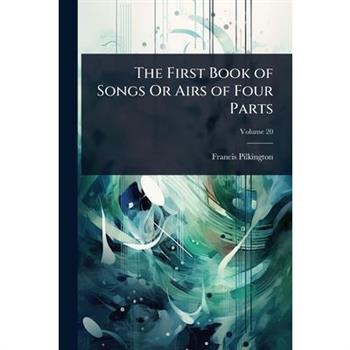



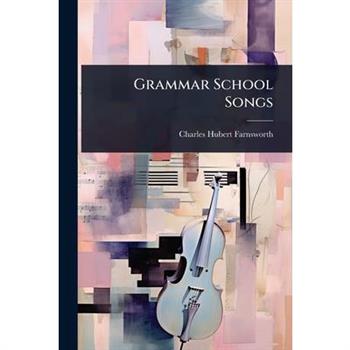



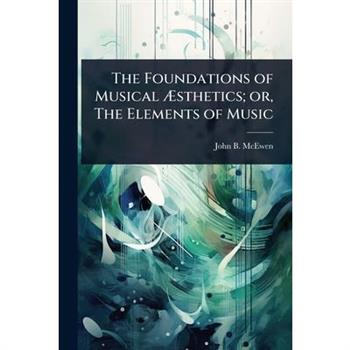
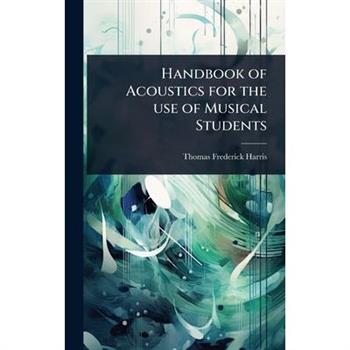



![The Quarterly Musical Magazine And Review [ed. By R.m. Bacon] The Quarterly Musical Magazine And Review [ed. By R.m. Bacon]](https://cdn.kingstone.com.tw/english/images/product/3684/9781024823684m.jpg?Q=6188a)
